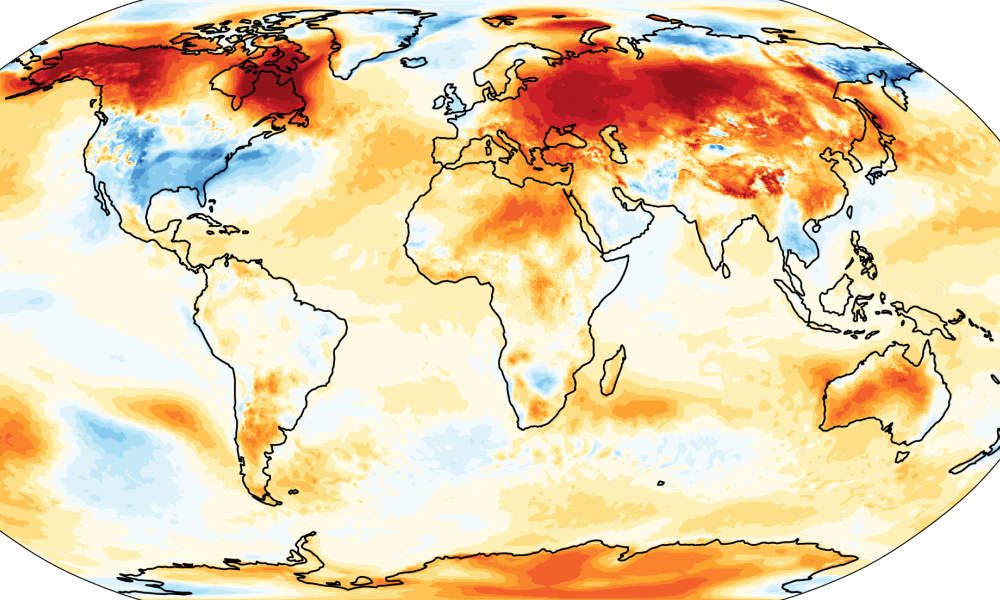World
Earth saw its hottest January on record

Earth has experienced its warmest January on record, according to new data published by the Copernicus Climate Change Service (C3S). Average temperatures were above the pre-industrial level for the 18th month in the last two years.
The average surface air temperature in January 2025 was 55.8°F (13.23°C), which is 3.15°F above pre-industrial levels. This marks the 18th month in the last 19 months in which the global average temperature has surpassed pre-industrial levels, according to the C3S report.
The 2.7°F (1.5°C) threshold for climate change comes from the Paris Agreement, based on decades of scientific consensus and studies. Under the agreement, global leaders committed to limiting warming to well below 2°C and striving for 1.5°C above pre-industrial levels to mitigate climate risks.
Temperatures were above average across Antarctica, northwest Canada, Alaska, and Siberia, as well as southern and eastern Europe, southern South America, Africa, and much of Australia.
January data also showed that the average sea surface temperature (SST) was 69.4°F (20.78°C), the second-highest on record for the month.
SSTs were below average over the central equatorial Pacific but close to or above average in the eastern equatorial Pacific, indicating a slowing or stalling of the transition toward La Niña conditions. Meanwhile, sea temperatures remained “unusually high in many other ocean basins and seas.”
January also brought wetter-than-average conditions to western Europe, Canada, Alaska, Australia, and Brazil, while drier-than-average conditions were observed in the southwestern U.S. and northern Mexico, northern UK and Ireland, eastern Spain, the Middle East, Central Asia, eastern China, and southern Africa, Australia, and South America.
Arctic sea ice reached its lowest January extent on record, at 6% below average, according to the report. Antarctic sea ice extent was 5% below average, a contrast to the record or near-record levels observed in 2023–2024.
“January 2025 is another surprising month,” said Dr. Samantha Burgess, Deputy Director of C3S. “It continues the record temperatures observed over the past two years, despite the development of La Niña conditions in the tropical Pacific and their temporary cooling effect on global temperatures.”

-

 US News1 week ago
US News1 week agoF-35 fighter jet crashes at Eielson Air Force Base in Alaska
-

 US News1 week ago
US News1 week agoBlack Hawk and American Airlines flight collide in D.C., killing 67
-

 US News5 days ago
US News5 days agoPlane crashes in Philadelphia, killing 6 on board; casualties reported on ground
-

 Legal1 day ago
Legal1 day agoOhio warehouse shooting leaves 1 dead, 5 injured
-

 Legal2 days ago
Legal2 days agoWisconsin Amber Alert: Sophia Franklin missing from Dodge County
-

 Business1 week ago
Business1 week agoTwitter alternative Bluesky hits 30 million users
-

 Legal1 week ago
Legal1 week agoBorder Patrol agents fired upon in Texas border
-

 US News1 week ago
US News1 week agoFlorida man dies after being pulled into woodchipper




